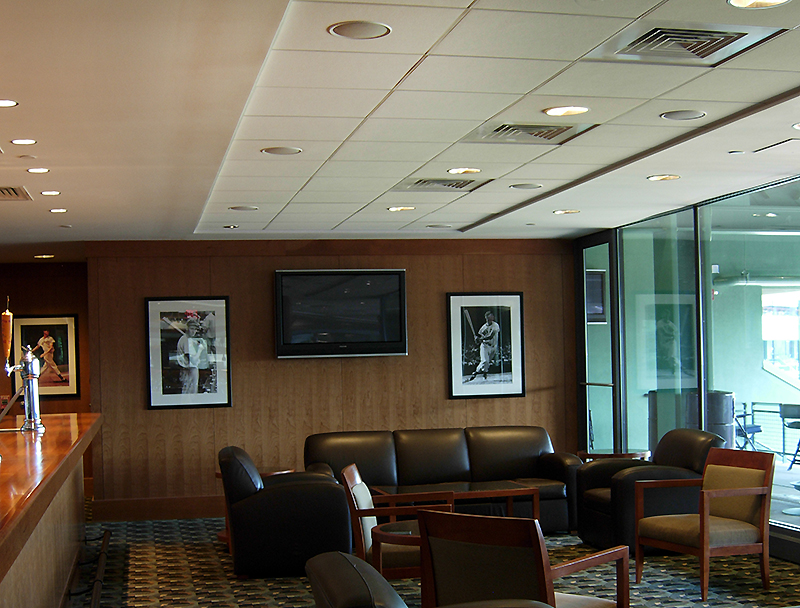
Myth: 70-volt systems have a lot of phase interference and comb filtering. High-density ceiling loudspeakers do indeed exhibit significant phase interference and comb filtering. This is one of the reasons why they can produce even sound coverage.
In general, the more loudspeakers, the more interference, the more even the coverage. A common mistake regarding ceiling loudspeakers is to install too few of them. In essence, if interference is inevitable, more is usually better than less.
This “carpet bomb” approach to sound coverage works well for some applications, such as meeting rooms, airport gates, and clothing stores. A more surgical approach to coverage that minimizes phase interference is preferred for theaters, auditoriums, and studios.
That said, the interference has nothing to do with whether or not the loudspeakers are on a 70-volt line. There would be just as much interference if each loudspeaker were 8 ohms and had its own amplifier.
Myth: A “70-volt amplifier” is required to drive a “70-volt system.” That’s the easiest way to do it, but what’s actually needed is an amplifier that can produce the distribution voltage (sine wave rating) and the necessary current based on the impedance of load, which in turn is determined by how many loudspeakers (and their power tap) that are daisy chained onto the line.
The “70-volt system” (and other standard distribution voltage schemes, such as 25 volts, 100 volts, etc.) assures that you can meet these conditions by simply adding the power taps and buying an appropriate amplifier.
A conventional (non-70-volt) amplifier can be used to drive the line if it allows the desired SPL to be reached. Since a conventional amplifier can be loaded to a fairly low impedance (8 ohms) it should be able to easily drive a zone of loudspeakers with transformers (usually a fairly high impedance).
An additional factor is that transformer loads (70-volt loudspeakers) are inherently more reactive than transformer-less loudspeakers, and some conventional amplifiers may not like that. For this reason, it is good practice to use an amplifier that is designed to drive a 70-volt system.
Done properly, a transformer-distributed loudspeaker system is a nice arrow-in-the-quiver of the sound system designer. They’ve served our industry for nearly a century and will likely do so for another. There’s simply no other way to accomplish what these systems can do:
— Drive many, many loudspeakers from a single amplifier.
— Use a relatively thin cable to do so.
— Set the volume of each loudspeaker independently.
If a system needs these attributes, transformer distribution is the way to go.
